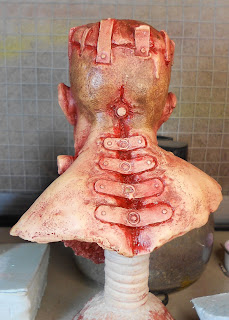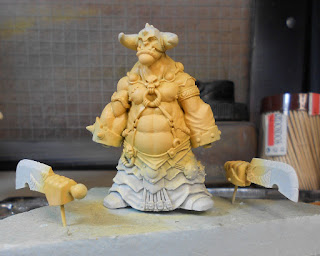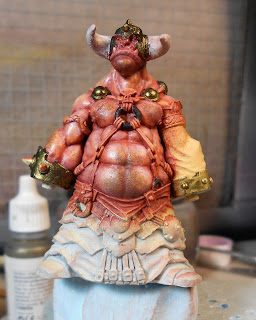Papel & Plástico
por Carlos Filipe
terça-feira, 11 de junho de 2019
segunda-feira, 10 de junho de 2019
KAHAR A MORSA / THE WALRUS - 75mm
Não há nada a dizer sobe a
montagem desta figura da Figone, passa-se directo para a pintura.
Fiz alguma pesquisa sobre a
aparência das morsas, queria uma abordagem diferente da sugerida. Como já há muitas
versões com cores de pele de fantasia, optei por uma abordagem quase realista.
Trabalhei com óleos artísticos, levam
mais tempo a secar mas gosto das cores e da maneira de trabalhar com este meio
Nothing to say about the assembly of this
figure by Figone, I reached to the
painting stage very soon.
I did some research on the appearance of
walruses, I wanted a different approach than the one suggested. As there are
already many versions with fancy skin colors, I opted for an almost realistic
approach.
I have worked with artistic oils, they take
more time to dry but I like the colors and the way of working with this medium
As variedade de tons na pele da morsa tornam atractiva a ideia de fazer uma representação semi-naturalista. The tones of the skin of the walrus are so interesting, I felt it would work well a semi naturalist approach.
Research photos of walrus
Studies of fish eyes
Studies of eskimo clothing
Não precisei mais do que estas cores para pintar a figura
These wer the colours I needed to paint the figure
The figure in an exhibition
quinta-feira, 6 de junho de 2019
RAGNAR THE HAIRY 54 mm
Descartei a caixa
agora não sei quem produziu a figura. Pode ser que alguém reconheça a página da
loja online onde a comprei.
Mudei o nome de Bull Rock para Ragnar "o Peludo" e
pintei a figura de forma diferente.
Usei óleos artísticos
segundo método de Verlinden para a figura.
Foi agradável voltar a um meio que conheço, é mais fácil para mim fazer os
"blendings".
Com acrílicos vai-se adicionando tinta, com os óleos via-se
subtraindo. A tinta é aplicada sem diluição, deixa-se ficar na figura
por uns 20 a 40 minutos dependendo da temperatura e humidade e depois retira-se
o excesso de tinta, deixando apenas veladuras com tons da tinta que se aplicou.
As sucessivas veladuras vão interagindo, criando os efeitos que se procura. Tenho
muito que praticar para relembrar a técnica e apurar os meus conhecimentos.
Pintar com acrílicos pode ser mais rápido, comparando com os
óleos. Frequentemente tive de parar porque a tinta não tinha secado minimamente
e estava a sujar, não progredindo.
Gosto do brilho das figuras, um resultado mais parecido com
pele suada e não posso deixar de salientar que necessito de apenas 4 ou 5 tubos
de tinta para trabalhar. Tenho
tubos com mais de 45 anos!
Subscrever:
Comentários (Atom)



















































